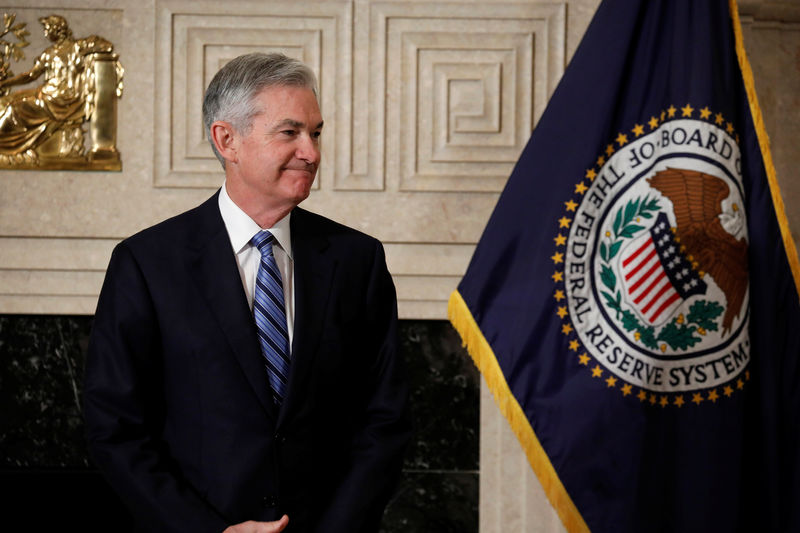 © Reuters. Federal Reserve Chairman Jerome Powell arrives to take the oath of office at the Federal Reserve in Washington
© Reuters. Federal Reserve Chairman Jerome Powell arrives to take the oath of office at the Federal Reserve in WashingtonBy Ann Saphir
SAN FRANCISCO (Reuters) – Faster-than-expected inflation may complicate the task ahead for new Federal Reserve chief Jerome Powell, who chairs his first monetary policy-setting meeting next month.
It’s not that the January increase in consumer prices reported on Wednesday is necessarily unwelcome news; the fact that underlying consumer prices posted their biggest gain in more than a year in January helps validate the Fed’s forecast for stronger inflation that for years has underrun its 2-percent goal.
The question is how the Fed, under Powell, will manage rising expectations in some quarters that the stronger inflation will require more aggressive monetary tightening.
So far Powell’s colleagues have signaled the central bank should stay on its course of gradual rate hikes, undeterred by recent market turbulence or fears about the impact the Trump administration’s tax and spending policies could have on inflation.
But traders have begun boosting bets that the Fed will need to fit in a fourth rate hike by the end of 2018, one more than the Fed currently forecasts, though they still see three hikes as the more likely scenario.
“The big issue for the Fed is whether they can resist the urge to tighten rates aggressively,” said Joseph Lavorgna, chief economist for the Americas at Natixis.
Not all data is pointing the same direction. Consumer spending has been flaccid since the Trump tax overhaul, with a separate report released Wednesday showing underlying retail sales unchanged in January, after dropping a bit in December.
Uncertainty over the economic outlook and particularly how strong inflation pressures could become played into a recent stock market downturn and a jump in long-term bond yields that themselves could impact Powell’s stance on monetary policy.
Still, says Eric Stein, a portfolio manager at Eaton Vance, “I think the bar for them not to hike due to let’s say stock market volatility is pretty high.”
If inflation rises considerably that could change their thinking, he added, “but keep in mind, part of the reason the Fed (has raised rates) even with inflation below target is that they expected inflation to pick up, and now it is picking up.”
Several of Powell’s colleagues have suggested as much. Cleveland Fed President Loretta Mester and San Francisco Fed President John Williams in recent days both signaled that they view recent economic data as validating their expectations for stronger inflation and continued, gradual rate hikes.
They’ve also made clear they are looking closely at incoming data, which will include new reads on jobs, spending and overall economic growth before the next policy meeting.
Powell’s own views may become clearer when he testifies before both houses of Congress in two weeks.
Investors widely expect the central bank to raise interest rates at its March meeting and two more times later this year.
Fusion Media or anyone involved with Fusion Media will not accept any liability for loss or damage as a result of reliance on the information including data, quotes, charts and buy/sell signals contained within this website. Please be fully informed regarding the risks and costs associated with trading the financial markets, it is one of the riskiest investment forms possible.
Source: Investing.com





























